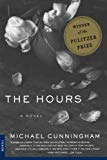
The Hours, a novel, follows a day in the life of three women whose lives are affected by the Virginia Woolf novel Mrs. Dalloway. The first is Woolf herself, dealing with her depression. Another is a 1940s housewife trying to plan her husband's birthday party, and the last is a contemporary lesbian trying to plan a celebration for a friend dying of AIDS. Each has aspects of their life which mirror the Mrs. Dalloway of the text, and the book itself invokes the style and themes of Woolf's classic novel.
'The Hours' concerns three generations of questionably lesbian or bisexual women. Virginia Woolf was known to have affairs with women; Laura Brown kisses Kitty in her kitchen, and Clarissa Vaughan is in a relationship with Sally, and was previously Richard's lover. Peripheral characters also exhibit a variety of sexual orientations.
To some extent the novel examines the freedom with which successive generations have been able to express their sexuality, to the public and even to themselves. As such, a definable sexuality for the characters of Virginia Woolf and Laura Brown is hard to ascertain. It could be argued, as does the author Michael Cunningham himself on the DVD commentary of the film version of 'The Hours', that were such characters born at later times in different circumstances they would come out as lesbians. For Virginia and Laura it would have been extremely difficult to "come out." Such a position would have meant extreme consequences in societies where homosexuality was in many cases illegal, treated with extreme medical 'therapies', and shunned by society. This untenable situation can be understood to provide much of the undercurrent of anguish for the characters, particularly in Laura Brown's case. Without this understanding, Laura could be conceived as ungrateful or a drama queen (as indeed many readers regarded Virginia Woolf's Clarissa Dalloway when Mrs.Dalloway was first published).
Cunningham's novel suggests, to some extent, that perceived mental illness can be a legitimate expression of perspective. The idea that sanity is a matter of perspective can be seen in Virginia Woolf's censoring of her true self because this will appear as insanity to others, even to herself; Cunningham's modern-day readership is able to understand Virginia's state of mind as other than 'insane':
She has learned over the years that sanity involves a certain measure of impersonation, not simply for the benefit of husband and servants but for the sake, first and foremost, of one's own convictions. —Virginia Woolf. p83, 1999 Fourth Estate paperback edition.
Suicide is also a major theme in each story in the novel.
Apart from the novel's three female protagonists, and the three symbiotic storylines that they appear in, there are other examples in the novel where Cunningham patterns his story on groups of three. Most conspicuous of all is the threeway relationship that once existed between Clarissa, Richard and Louis when they were three students on holiday together. In the 'Mrs. Woolf' storyline there is another grouping of three (biographically factual) in Vanessa's three children, Quinten, Julian, and Angelica, who come with their mother to visit Virginia. Then there is the nuclear family of three we find in Laura Brown, her husband Dan, and their son Richie.
Michael Cunningham has admitted to his preoccupation with the number three in a televised interview with Charlie Rose. Its occurrence is prominent in the structures and character relationships of two further novels by Cunningham, Specimen Days and A Home at the End of the World.
Already have an account? Log In Now